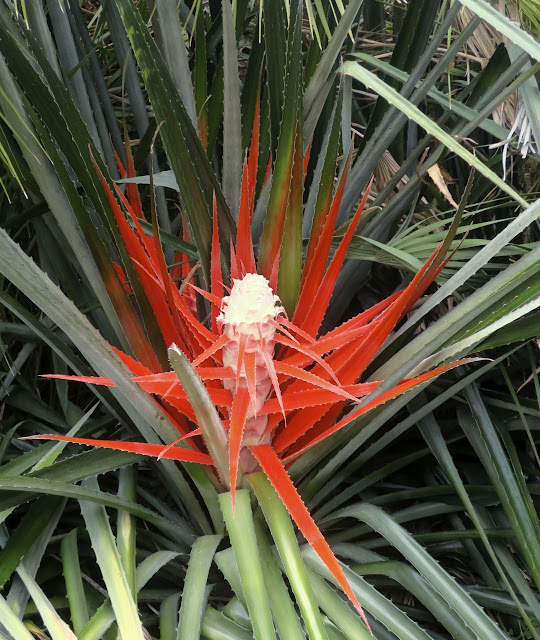...at the beginning of the month and included it in last week's posting, I had not expected to refer to it again. However, I passed it again at the beginning of this week.
I was astonished to see that the flower spike had grown enormously. Unfortunately, I was still not able to find its label among the mass of very spiky leaves at the base of the plant. I will try next week as I will be in Melbourne again.
Last Monday evening, the Melbourne Chapter of Ikebana International held its first meeting for the year. The guest speaker was Mr Peter Gertler, who became a qualified silver and goldsmith after studying at the Royal Melbourne Institute of Technology. Peter explained that, early in his career, he visited Japan and became enthralled by the high quality of hand-crafted work of even the most prosaic domestic items. He also delighted in the simplicity and elegance of Japanese design. He said these qualities resonated with his own approach to his work and subsequently became an abiding influence on him.
I was particularly struck with several of his observations that have such relevance for ikebana. In particular, he made the observation that it is important to know your material, to know what it can do and cannot do. His second observation that stayed with me was to know when to stop. How easy it is to add more material to a design and, in the process, lose its intention and essence.
As is the practise at our I.I. Chapter meetings, members were asked to make an ikebana work on the theme of the meeting.
With jewellery in mind, I thought to use some man-made material to capture the sparkling quality of silver metal. I have used two sheets of shiny aluminium mesh which I placed, off-set, on top of each other. This created a 'moire' interference pattern, which is not very apparent in the photograph. Neither is the sheen of the metal. I was imagining a silver broach as my inspiration. A dried and a fresh leaf of Brachychiton acerifolius, sit to one side of the mesh. The colour of the dried leaf is lifted by the placement is a small twist of brown and red tissue paper in its centre. The whole is elevated above the spherical ceramic vessel on three stems of stainless steel wire.
I took a second photograph from above, with the work sitting on a dark cloth for a clearer view of the design.
Greetings from Christopher
12th February 2022



























